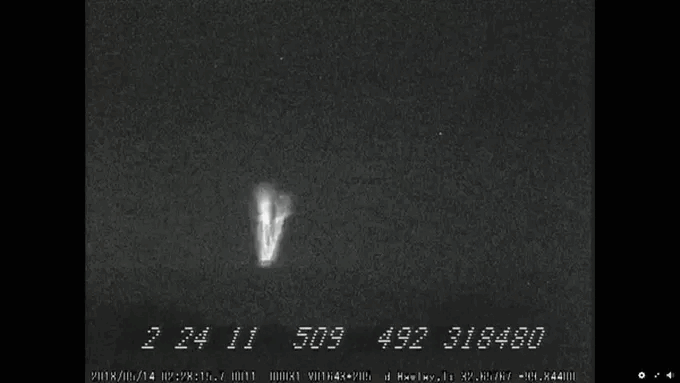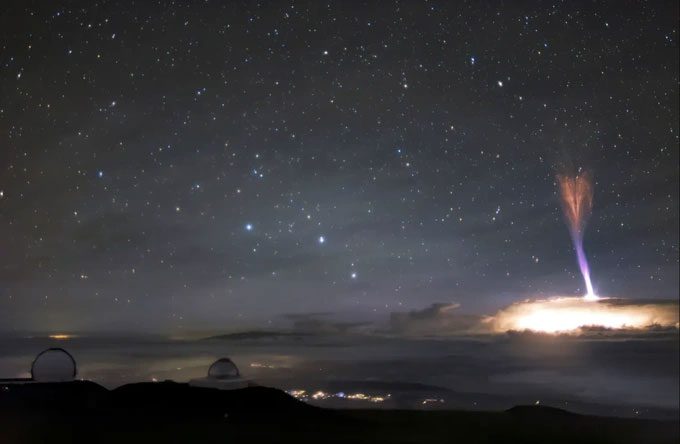A rare footage captures a gigantic lightning bolt shooting upward into the clouds instead of striking downward. For many years, this phenomenon has challenged scientists’ understanding.
Lightning from thunderstorms does not only strike down to the ground. Sometimes, it moves in the opposite direction, forming a rare discharge phenomenon known as “upper-atmospheric lightning”. This name is derived from the fact that these lightning bolts originate from the top of clouds and shoot towards the upper edge of the atmosphere.

A frame from a short clip capturing the movement of the “Gigantic Jet” lightning. (Photo: Kevin Palivec).
The cause and formation process of these lightning bolts remain unclear, as witnessing them “in person” or even capturing the moment is extremely challenging.
The research began with a short clip recorded by Kevin Palivec, an atmospheric scientist and photographer, in Central Texas, USA.
In the clip, the “Gigantic Jet” (a rare form of upper-atmospheric lightning) is seen originating from a region at the top of a cloud, at an altitude of about 15 – 20 kilometers. It then discharges upward, reaching the ionosphere – the part of our planet’s atmosphere that extends from about 48 kilometers above the surface to the edge of space, approximately 965 kilometers away.
Unlike regular lightning, upper-atmospheric lightning often connects into a very dense bundle and releases about three times the amount of electrical charge compared to the region between the cloud and the ionosphere.
This special lightning also appeared during a land-based storm, rather than over the sea, where similar phenomena are more commonly recorded.

Gigantic Jet captured at Mauna Kea volcano, Hawaii. (Photo: Getty).
In addition to the Gigantic Jet, other unusual cases have been recorded, such as sprites caused by electrical discharges from the top of the cloud or the ground; or blue jets resembling shooting stars moving in the stratosphere…
Most of these special lightning events occur over a short duration, lasting only a few milliseconds. Sometimes, they are believed to be the cause of unexplained incidents involving high-altitude vehicles or when they move upward to evade tropical storms.
Capturing this special lightning has helped scientists gain a better understanding of how similar temporary luminous phenomena are formed.




















































